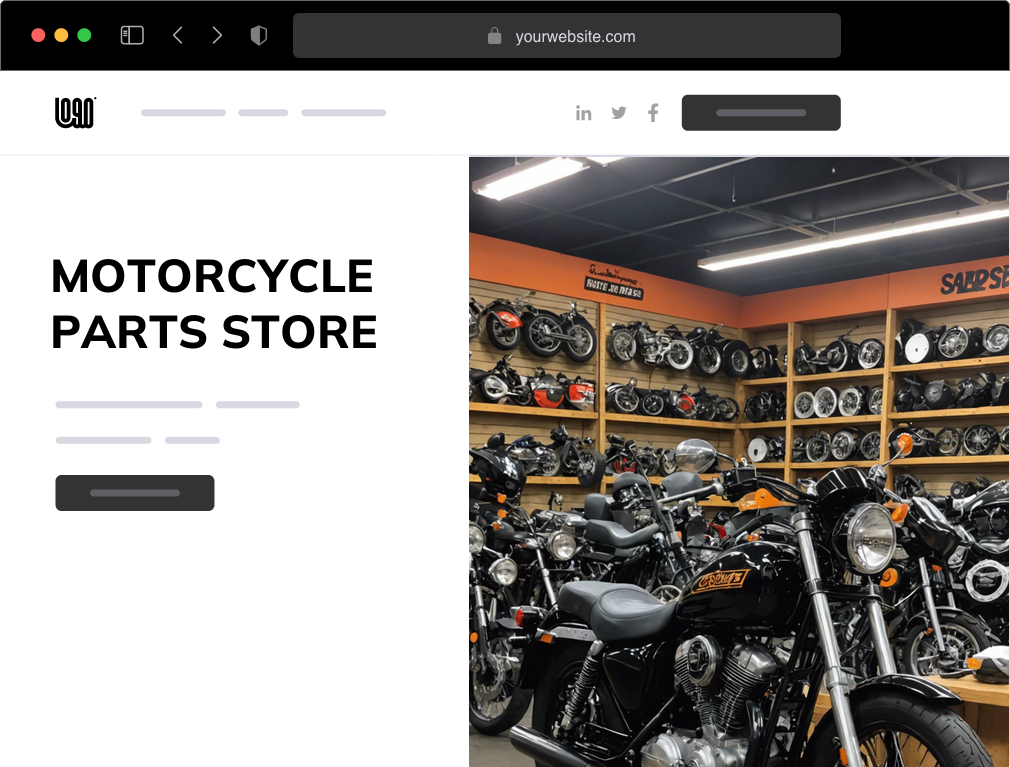Unleash Performance with Costs Motox Parts NZ Available Below
Unleash Performance with Costs Motox Parts NZ Available Below
Blog Article
Understanding the Crucial Parts of a Motorcycle: A Comprehensive Guide for Enthusiasts
For motorcycle enthusiasts looking to elevate their riding experience and ensure their bikes run smoothly, comprehending the crucial components of a motorcycle is paramount. Each element, from the engine's intricate workings to the essential role of the braking mechanisms, not only affects performance yet also safety and convenience.
Engine Elements

The camshaft plays an important role in managing the timing of the engine's shutoffs, making sure the precise opening and closing needed for effective fuel and air intake, along with exhaust expulsion. This timing is vital to maintaining ideal engine efficiency and performance. Furthermore, the carburetor or gas shot system, depending upon the bike model, is in charge of blending air with fuel in the correct proportion for combustion.
The air conditioning system, either air or liquid-based, functions to maintain the engine's temperature within functional limitations, protecting against overheating and making sure longevity - motorcycle parts nz. Each element, meticulously developed and incorporated, adds to the smooth operation of the engine, defining the motorcycle's power outcome and general efficiency
Transmission System
Integral to the motorcycle's performance, the transmission system makes certain efficient power transfer from the engine to the wheels. This system makes up numerous vital elements, consisting of the clutch, transmission, and final drive, each playing a crucial duty in equating the engine's power right into motion. The clutch, commonly run by a hand bar, offers to involve and disengage the engine from the transmission, permitting smooth gear changes and controlled velocity.
The transmission, usually described as the transmission correct, has a collection of equipments that motorcyclists can by hand shift with to change the bike's rate and torque outcome. These gears are set up in a series that allows the bike to increase efficiently and preserve optimum engine efficiency throughout numerous speeds. A lot of motorbikes utilize a consecutive gearbox, calling for the cyclist to change gears in a predetermined order.
Braking Mechanisms
While recognizing the transmission system is crucial to taking advantage of a motorbike's power, equally vital is the capability to control and quit that power properly, which is where braking mechanisms enter into play. Brakes are vital for security and performance, supplying the biker with the necessary control to browse various surfaces and problems. Generally, motorcycles feature 2 kinds of braking systems: disc brakes and drum brakes.
Disc brakes are extra common in modern-day motorbikes as a result of their remarkable performance. They contain a brake disc, caliper, and pads. When activated, the caliper squeezes the brake pads versus the rotating disc, transforming kinetic energy right into heat, consequently slowing the wheel. This system uses better warm dissipation, regular performance, and boosted stopping power, particularly in damp conditions.
Conversely, drum brakes, though much less usual, are still found in some motorbikes. They function by pushing brake footwear against the inner surface of a drum connected to the wheel. While usually less effective in warm dissipation and stopping power, drum brakes are easier and extra affordable.
Recognizing these braking systems' nuances allows bikers to preserve their motorbikes effectively and value the design that makes sure reliable and secure quiting.
Suspension and Guiding
Suspension and guiding systems are essential parts that significantly influence a motorcycle's handling and ride convenience. this post The shock absorber, containing forks at the front and shock absorbers at the back, soaks up roadway abnormalities, boosting security and control. Front forks, upside down or typically telescopic, compress and rebound to reduce impacts, while rear shock absorbers preserve tire contact with the road, crucial for grip and safety and security.
Guiding, centered around the handlebars, connects the motorcyclist to the bike's directional control. The guiding head bearings guarantee smooth operation, allowing exact ability to move. Correct positioning and maintenance of these bearings are important for predictable steering response and decreasing cyclist exhaustion.
The suspension's adjustability is an additional important element; preload, damping, and rebound settings allow personalization to fit various riding problems and designs. This versatility is essential for maximizing efficiency, whether navigating city roads or dealing with sturdy trails. Advancements like electronic shock absorber offer real-time changes, enhancing trip quality throughout her latest blog varied terrains.

Electrical Equipments
After making sure a regulated and smooth experience via effective suspension and steering systems, attention transforms to the electric systems, a critical aspect of modern motorcycles. These systems play a vital function not just in beginning the engine however likewise in powering various components that enhance the capability and safety of the motorcycle.
At the heart of a bike's electrical system is the battery, which stores electric energy essential for beginning the engine and powering auxiliary systems - mx parts nz. The generator or generator, coupled with the rectifier-regulator, makes certain the battery remains charged while the motorcycle functions, converting power into electrical power and maintaining voltage levels
The ignition system, one more critical element, is accountable for firing up the air-fuel combination in the engine's cylinders. Modern bikes usually use a digital ignition system, providing higher effectiveness and dependability contrasted to typical systems.
Lights systems, consisting of headlights, tail lights, and signs, are likewise essential, guaranteeing visibility and security for the biker. Extra electronic components such as sensing units, control systems, and shows add to sophisticated attributes like gas injection management, anti-lock stopping systems (ABS), and electronic dashboards, better boosting the riding experience.
Conclusion
A Full Article detailed understanding of a bike's crucial elements, including the engine, transmission system, braking mechanisms, suspension, guiding, and electric systems, is indispensable for fanatics intending to enhance convenience, safety and security, and efficiency. Mastery of these elements enables informed decisions regarding maintenance and upgrades, ultimately improving the riding experience. By integrating this expertise, cyclists can guarantee their bikes operate at peak performance and reliability, therefore making the most of both satisfaction and durability of their automobiles.
For motorcycle enthusiasts looking to boost their riding experience and guarantee their bikes run smoothly, comprehending the important elements of a motorcycle is extremely important.Important to the bike's performance, the transmission system makes certain reliable power transfer from the engine to the wheels.While comprehending the transmission system is vital to utilizing a bike's power, equally vital is the capability to control and quit that power effectively, which is where braking systems come right into play. Usually, motorbikes feature two types of braking systems: disc brakes and drum brakes.
A thorough comprehension of a bike's necessary components, consisting of the engine, transmission system, braking devices, suspension, guiding, and electric systems, is important for fanatics intending to maximize performance, convenience, and security.
Report this page